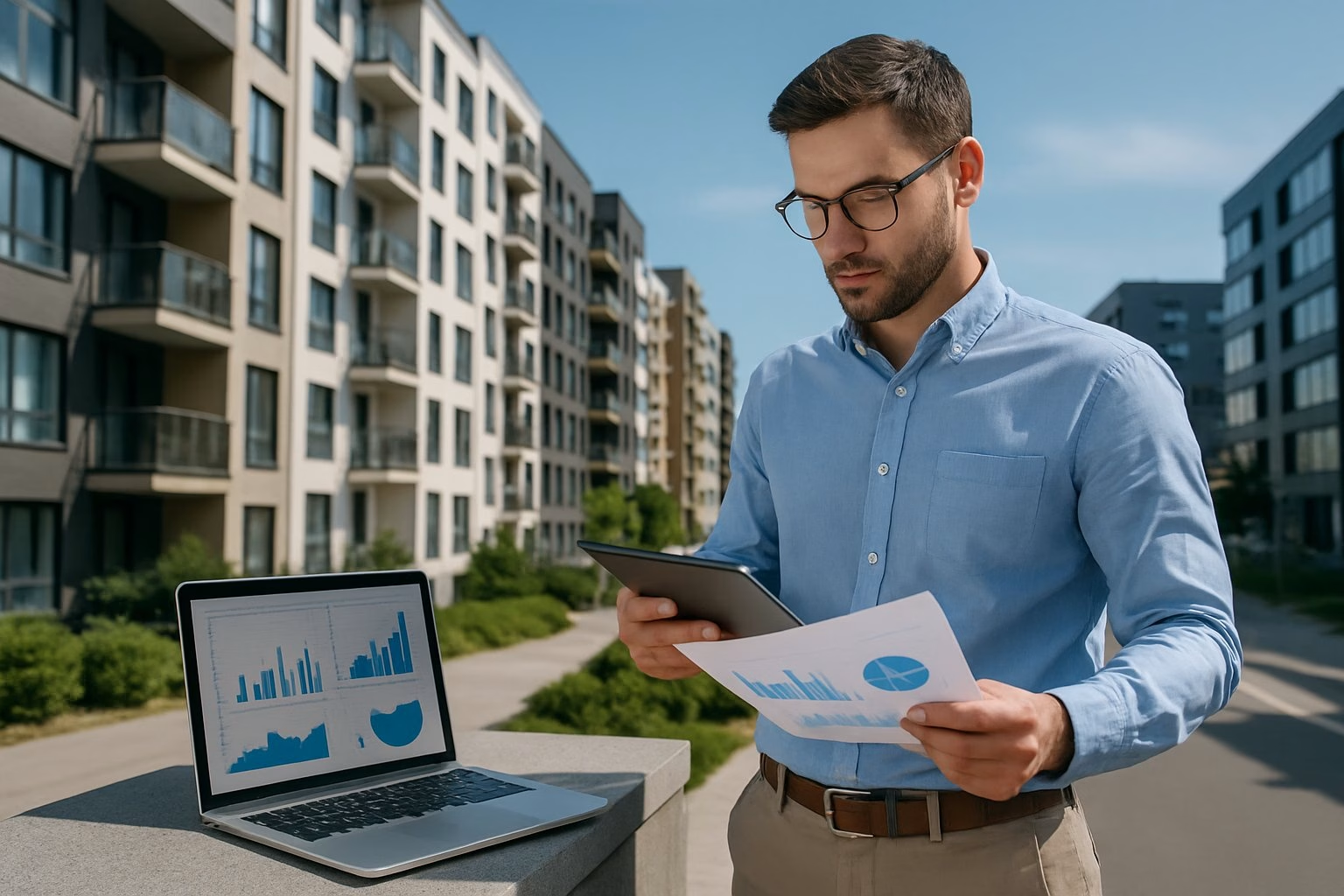SBA funding can help you purchase, renovate, or construct commercial properties with longer terms and lower down payments than most traditional loans. Understanding how SBA loans work for real estate gives you a competitive edge over buyers using conventional financing.
Through programs like the SBA 7(a) and 504 loans, you gain access to flexible options for upgrading, building, or acquiring real estate for your business or investment portfolio. Knowing the differences between SBA products and other loan types helps you make informed, strategic decisions.
Key Takeaways
- SBA funding provides structured solutions for real estate investors.
- Common SBA loan programs offer unique benefits for real estate deals.
- Eligibility and process steps are important for successful financing.
SBA Funding Options for Real Estate
You can choose from several SBA loan programs for your real estate investments, each with unique benefits, requirements, and structures. These options allow you to purchase, construct, or renovate commercial properties while managing your cash flow and business growth.
SBA 7(a) Loan Program Overview
The SBA 7(a) loan is the most common option for real estate investors seeking flexibility. This program allows you to purchase commercial real estate, refinance existing business debt, or renovate properties.
Loan amounts can reach up to $5 million. You generally need a 10% down payment, though it can sometimes be higher based on risk profile or business type. Repayment terms for real estate purchases may extend up to 25 years. With a 7(a) loan, you work through an SBA-approved lender, and the Small Business Administration guarantees a percentage of the loan, reducing lender risk.
Interest rates are usually variable, based on the prime rate plus a markup. You must occupy at least 51% of the property for your business, making this program best suited for owner-occupied commercial real estate rather than passive investment. Some working capital or equipment costs may also be included.
SBA 504 Loan Program Overview
The SBA 504 loan specifically finances fixed assets like real estate or large equipment. This program involves a partnership between you, a traditional bank, and a Certified Development Company (CDC).
You typically provide a 10% down payment; the CDC funds up to 40%, while the bank covers the remaining 50%. This structure means SBA 504 loans require less equity upfront than many conventional bank loans.
504 loans commonly help you buy, construct, or improve commercial properties, but you cannot use the funds for working capital or inventory. Loan terms can be 10, 20, or 25 years, usually at fixed interest rates. For energy-efficient or manufacturing projects, loan amounts can go up to $5.5 million per project.
Key Differences Between SBA 7(a) and 504 Loans
When comparing the 7(a) and 504 loan programs, the main differences lie in their structures, eligible uses, and flexibility.
| Feature | 7(a) Loan | 504 Loan |
|---|---|---|
| Purpose | Broad, including working capital, equipment, and real estate | Fixed assets like real estate and equipment only |
| Structure | One loan from SBA-approved lender | Partnership: CDC + bank + borrower |
| Down Payment | Typically 10%-20% | Typically 10%, less cash upfront |
| Max Amount | $5 million | $5.5 million (certain projects) |
| Interest Rate | Variable | Fixed |
| Collateral | Real estate often required | Real estate is collateral |
The 504 loan is a stronger choice for long-term, owner-occupied property investment, while the 7(a) loan offers more flexibility if you need funding for additional business purposes. Both require owner occupancy but differ in how you can use and structure the funds.
Other SBA Loan Programs for Real Estate
Outside of the 7(a) and 504 loan programs, the SBA offers a few other options, though you can use them for real estate in more limited ways.
The SBA Microloan program provides funding up to $50,000, but these funds generally do not cover real estate purchases, making them less suitable for most investors seeking to acquire commercial property. SBA Express loans, part of the 7(a) family, offer faster approval times and smaller maximum loan amounts but can sometimes help with real estate purchases.
Banks and other non-SBA lenders may also offer business loans for commercial properties, but these loans do not benefit from SBA guarantees and often require higher equity and stricter qualifications. For most real estate investment needs—especially larger, owner-occupied projects—the 7(a) or 504 loan will be your primary SBA-backed options.
Qualifying for and Using SBA Real Estate Financing
Securing an SBA real estate loan involves meeting strict requirements, completing a detailed application process, and understanding rules for occupancy, eligible property types, and loan terms. These loans offer tools that support small business growth, economic development, and stable job creation.
Eligibility Requirements
To qualify for an SBA real estate loan, your business must operate for profit, hold a valid business license, and meet the SBA’s size standards. The property you finance must be located in the United States, and your business must demonstrate the ability to repay the loan.
Only businesses classified as “small” according to industry-specific thresholds can access SBA loans. Nonprofit organizations and firms primarily engaged in lending, investing, or speculative activities do not qualify. For existing buildings, you must occupy at least 51% of the property. New construction demands a minimum of 60% owner occupancy.
Before you apply, ensure your financial statements are in order and that you can prove your business serves a public policy goal, such as community development or job creation. These factors can influence your approval odds.
Application Process for SBA Real Estate Loans
The SBA loan application process can take time, and you must provide extensive documentation. You will need to submit business tax returns, personal tax returns, financial statements, and details on assets, liabilities, and projected financials.
Prepare the following core documents:
- Business plan
- Business license and registrations
- Rent rolls or property details (if applicable)
- Purchase agreements or renovation plans
- Proof of owner-occupancy intention
Work with an SBA-approved lender, who will guide you through submitting all required forms and supporting materials. Processing times vary but often range from several weeks to a few months. The SBA may also require collateral and personal guarantees during the underwriting process.
Owner-Occupancy Requirement and Allowable Property Types
The owner-occupancy requirement distinguishes SBA real estate loans from most investment or commercial property loans. For existing buildings, your business must plan to occupy at least 51% of the usable space; for new construction, at least 60%. You can sub-lease to other tenants but cannot exceed these occupancy thresholds.
Eligible properties include office buildings, warehouses, manufacturing facilities, and retail centers, as long as your business operates primarily from the location. Properties for pure investment—such as apartment complexes or those where you do not run your core business—do not qualify for these programs.
These requirements promote local economic activity and community development through business expansion and job creation. You can fund property uses such as daycares, medical offices, and light industrial sites through SBA programs, while speculative land development and passive investment properties remain excluded.
Interest Rates, Terms, and Down Payments
SBA real estate loans offer some of the most competitive commercial financing terms available. Both the SBA 7(a) and SBA 504 programs typically provide lower interest rates compared to conventional loans, and fixed or variable rate options may be available depending on the lender and program. For detailed comparisons and current rates, see the SBA Real Estate Loans guide.
Interest rates often tie to the Prime Rate plus a negotiated spread. Repayment terms can extend up to 25 years for real estate, reducing monthly payments and improving cash flow predictability.
Down payments usually range from 10% to 20% of the property value, which is lower than many traditional commercial loans. SBA 504 loans require a minimum 10% equity injection, while some 7(a) loans may require a slightly higher amount, especially for startups.
You can often roll debt refinancing, renovation costs, and some soft costs into the total loan, making SBA loans flexible tools for real estate acquisition, construction, and major upgrades.
Frequently Asked Questions
SBA funding options for real estate have specific requirements and unique processes. You need to understand eligibility rules, loan limits, and detailed application procedures to select the best financing option for your business needs.
What are the eligibility criteria for obtaining an SBA 7(a) loan for commercial real estate?
Your business must operate for profit, meet SBA size standards, and be based in the United States. The property in question must be at least 51% owner-occupied for existing buildings or 60% for new construction. See more details on the SBA 7(a) loan eligibility requirements.
How does one apply for an SBA 504 loan, and what are the associated rates?
To apply for an SBA 504 loan, you’ll work with a Certified Development Company (CDC) and a private lender. The CDC submits the SBA portion for approval, while the lender funds the remainder. Rates generally include a fixed portion from the CDC and a variable market rate from the lender, often resulting in favorable, long-term fixed rates. Learn about the SBA loan process for real estate projects.
What are the down payment requirements for real estate loans through the SBA?
For an SBA 7(a) or 504 loan, you typically need a 10% down payment, but this may increase to 15% or more for startups or special-purpose properties. Conventional financing often requires up to 25%, so SBA loans offer lower up-front equity needs.
Can SBA loans be used for both purchasing and refinancing commercial real estate?
You can use SBA loans to purchase, construct, or refinance commercial properties. This flexibility makes SBA funding suitable for growing businesses needing more favorable terms, whether acquiring new property or restructuring current debt.
What are two primary eligibility conditions for SBA grants for small businesses?
To qualify for an SBA grant, your business must be officially registered and operate for profit in the United States. The business also needs to fit SBA size standards, which depend on industry, annual revenue, and employee count.
What is the maximum amount one can finance with an SBA real estate loan?
You can finance up to $5 million with an SBA 7(a) loan for commercial real estate. For the 504 program, projects can exceed $5 million, but the SBA caps its participation while the lender and CDC cover additional amounts. You can find more information on maximum SBA real estate loan amounts online.
Ever wish you could analyze properties like the pros?
Save time and make smarter investment decisions with the most powerful real estate analysis software on the market.
Enter the code BESTDEAL at check out and receive a 20% Off Discount!

Master the art of real estate investing with The Real Estate Property Management Guide: Premium Edition – your comprehensive roadmap to successful property management.
Whether you’re a novice investor or seasoned professional, this guide covers everything from selecting the right investment properties to tenant management and property marketing.
The author, Jeff Rohde writing as Jeffrey Roark, is a professional with over 25 years of real estate experience. This Premium Edition includes the valuable bonus book Investment Real Estate Analysis: A Case Study to help you identify hidden opportunities and evaluate properties like a professional.
Learn practical, actionable strategies for both residential and commercial properties, from single-family homes to office buildings and shopping centers.
Don’t just buy property – learn how to manage it successfully and maximize your investment potential.
Grab your copy now from your favorite bookseller:
- Amazon (Basic Edition, does not include Investment Real Estate Analysis: A Case Study)
- Books2Read for Apple, Barnes & Noble, Kobo, Scribed, and 8 more sellers with both eBook and paperback options available (Premium Edition, includes Investment Real Estate Analysis: A Case Study)
- Payhip as a downloadable PDF (Premium Edition)
Ready to take your business to the next level?
- Subscribe to our newsletter
- Visit the learning center
- Learn more about our consulting services



